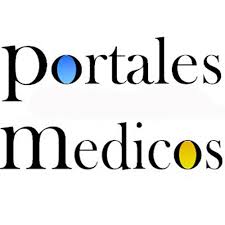Patrones histopatológicos asociados a linfadenopatías reactivas de etiología no neoplásica en niños: revisión bibliográfica
Histopathological patterns associated with reactive lymphadenopathies of non-neoplastic etiology in children: bibliographic review
Resumen
RESUMEN
Introducción: las linfadenopatías reactivas son el agrandamiento de los ganglios linfáticos como consecuencia de la respuesta inmune del cuerpo, una condición frecuente en pediatría. Objetivo: caracterizar las linfadenopatías reactivas de etiología no neoplásica según sus patrones histopatológicos. Metodología: se realizó una revisión bibliográfica desde enero de 2010 hasta enero de 2025; se utilizaron bases de datos como PubMed, Science Direct, Scielo, Bvsalud y Google Académico. Una vez identificados los artículos y eliminados los duplicados, se realizó un proceso de (pre) selección, elección y análisis, siguiendo la normativa PRISMA. Tomando los criterios de inclusión y exclusión. Resultados: un total de 33 artículos fueron revisados. Las linfadenopatías reactivas se clasifican por etiología y patrones histopatológicos, que incluyen: hiperplasia folicular (área de células B), expansión interfolicular o parafolicular (área de células T), histiocitosis sinusal (áreas de monocitos y macrófagos), linfadenitis granulomatosa y necrosante (supurativa), y un patrón mixto que combina algunos o todos los patrones anteriores. Conclusiones: el agrandamiento ganglionar en niños es común y abarca diversas etiologías, siendo pocos los casos que requieren biopsia. Las linfadenopatías reactivas exigen una evaluación integral, estudios complementarios y análisis histopatológico para identificar patrones reactivos específicos, facilitando el diagnóstico diferencial de procesos reactivos benignos de aquellos que son malignos o que simulan estos últimos, optimizando así el manejo clínico. Esta revisión busca guiar el estudio de estas patologías en pediatría, destacando la importancia de la actualización continua y ofreciendo una síntesis clara que unifique las linfadenopatías reactivas no neoplásicas basado en sus patrones histopatológicos.
ABSTRACT
Introduction: Reactive lymphadenopathies are the enlargement of lymph nodes as a consequence of the body's immune response, a frequent condition in pediatrics. Objective: To characterize reactive lymphadenopathies of non-neoplastic etiology according to their histopathologic patterns. Methodology: A literature review was performed from January 2010 to January 2025; databases such as PubMed, Science Direct, Scielo, Bvsalud and Google Scholar were used. Once the articles had been identified and duplicates eliminated, a process of (pre)selection, selection and analysis was carried out, following the PRISMA guidelines. Inclusion and exclusion criteria were used. Results: A total of 33 articles were reviewed. Reactive lymphadenopathies are classified by etiology and histopathological patterns, which include: follicular hyperplasia (B-cell area), interfollicular or parafollicular expansion (T-cell area), sinus histiocytosis (areas of monocytes and macrophages), granulomatous and necrotizing (suppurative) lymphadenitis, and a mixed pattern combining some or all of the above patterns. Conclusions: lymph node enlargement in children is common and involves various etiologies, with few cases requiring biopsy. Reactive lymphadenopathies require a comprehensive evaluation, complementary studies and histopathological analysis to identify specific reactive patterns, facilitating the differential diagnosis of benign reactive processes from those that are malignant or that simulate the latter, thus optimizing clinical management. This review seeks to guide the study of these pathologies in pediatrics, highlighting the importance of continuous updating and offering a clear synthesis that unifies non-neoplastic reactive lymphadenopathies based on their histopathologic patterns.
Recibido: 18-05-2025
Aceptado: 28-06-2025
Publicado: 04-07-2025
Palabras clave
Texto completo:
PDFReferencias
Albany, C., Psevdos, G., Balderacchi, J., & Sharp, V. L. (2011). Epstein-Barr virus myelitis and Castleman's disease in a patient with acquired immune deficiency syndrome: a case report. J Med Case Rep, 5, 209. https://doi.org/10.1186/1752-1947-5-209
Ardila-Suarez, O., Abril, A., y Gómez-Puerta, J. A. (2017). Enfermedad relacionada con IgG4: revisión concisa de la literatura. Reumatologia Clinica, 13(3), 160–166. https://doi.org/10.1016/j.reuma.2016.05.009
Bruce-Brand, C., Schneider, J. W., & Schubert, P. (2020). Rosai-Dorfman disease: an overview. Journal of Clinical Pathology, 73(11), 697–705. https://doi.org/10.1136/jclinpath-2020-206733.
Chan, J. K. C., & Kwong, Y.-L. (2010). Common misdiagnoses in lymphomas and avoidance strategies. The Lancet Oncology, 11(6), 579–588. https://doi.org/10.1016/S1470-2045(09)70351-1
Chen, H.-C., Wang, R. C., Tsai, H.-P., Medeiros, L. J., & Chang, K.-C. (2022). Morphologic spectrum of lymphadenopathy in drug reaction with eosinophilia and systemic symptoms syndrome. Archives of Pathology & Laboratory Medicine, 146(9), 1084–1093. https://doi.org/10.5858/arpa.2021-0087-OA
Emile, J.-F., Cohen-Aubart, F., Collin, M., Fraitag, S., Idbaih, A., Abdel-Wahab, O., Rollins, B. J., Donadieu, J., & Haroche, J. (2021). Histiocytosis. Lancet, 398(10295), 157–170. https://doi.org/10.1016/s0140-6736(21)00311-1
Facchetti, F., Lonardi, S., Vermi, W., & Lorenzi, L. (2019). Updates in histiocytic and dendritic cell proliferations and neoplasms. Diagnostic Histopathology, 25(6), 217–228. https://doi.org/10.1016/j.mpdhp.2019.04.001
Faraz, M., & Rosado, F. G. N. (2021). Reactive lymphadenopathies. Clinics in Laboratory Medicine, 41(3), 433–451. https://doi.org/10.1016/j.cll.2021.04.001
Fortes Gutiérrez, S., Narro Flores, M. E., y Castañeda Narváez, J. L. (2020). Linfadenopatía cervical en pediatría. Revista Latinoamericana de Infectología Pediátrica, 33(1), 44–48. https://doi.org/10.35366/92385
Gaddey, H. L., & Riegel, A. M. (2016). Unexplained lymphadenopathy: Evaluation and differential diagnosis. American Family Physician, 94(11), 896–903.
Gómez Cadavid, E., Giraldo, L. M., Espinal, D. A., & Hurtado, I. C. (2016). Características clínicas e histológicas de adenopatías en pacientes pediátricos. Revista chilena de pediatría, 87(4), 255–260. https://doi.org/10.1016/j.rchipe.2015.11.007
Grant, C. N., Aldrink, J., Lautz, T. B., Tracy, E. T., Rhee, D. S., Baertschiger, R. M., Dasgupta, R., Ehrlich, P. F., & Rodeberg, D. A. (2021). Lymphadenopathy in children: A streamlined approach for the surgeon - A report from the APSA Cancer Committee. Journal of Pediatric Surgery, 56(2), 274–281. https://doi.org/10.1016/j.jpedsurg.2020.09.05
Gru, A. A., & O’Malley, D. P. (2018). Autoimmune and medication-induced lymphadenopathies. Seminars in Diagnostic Pathology, 35(1), 34–43. https://doi.org/10.1053/j.semdp.2017.11.015
Haddaway, N. R., Page, M. J., Pritchard, C. C., & McGuinness, L. A. (2022). PRISMA2020: An R package and Shiny app for producing PRISMA 2020-compliant flow diagrams, with interactivity for optimised digital transparency and Open Synthesis. Campbell Systematic Reviews, 18(2), e1230. https://doi.org/https://doi.org/10.1002/cl2.1230
Jones, D. (2010). Histiocytic and dendritic cell neoplasms. Surgical Pathology Clinics, 3(4), 1165–1183. https://doi.org/10.1016/j.path.2010.09.008.
Khatri, A., Mahajan, N., Malik, S., Rastogi, K., Kumar, P., & Saikia, D. (2021). Peripheral lymphadenopathy in children: Cytomorphological spectrum and interesting diagnoses. Turk Patoloji Dergisi, 37(3), 219–225. https://doi.org/10.5146/tjpath.2021.01537
Kim, W. J., Chung, M. J., & You, I. C. (2013). Kimura disease involving a caruncle. Korean J Ophthalmol, 27(2), 137-140. https://doi.org/10.3341/kjo.2013.27.2.137
King, S. K. (2017). Lateral neck lumps: A systematic approach for the general paediatrician. Journal of Paediatrics and Child Health, 53(11), 1091–1095. https://doi.org/10.1111/jpc.13755
King, D., Ramachandra, J., & Yeomanson, D. (2014). Lymphadenopathy in children: refer or reassure? Archives of Disease in Childhood. Education and Practice Edition, 99(3), 101–110. https://doi.org/10.1136/archdischild-2013-304443
Longo, M. V., Jaton, K., Pilo, P., Chabanel, D., & Erard, V. (2015). Long-Lasting Fever and Lymphadenitis: Think about F. tularensis. Case Rep Med, 2015, 191406. https://doi.org/10.1155/2015/191406
Lucas, S. B. (2017). Lymph node pathology in infectious diseases. Diagnostic Histopathology, 23(9), 420–430. https://doi.org/10.1016/j.mpdhp.2017.07.002
Mariani, R. A., & Courville, E. L. (2023). Reactive lymphadenopathy in the pediatric population with a focus on potential mimics of lymphoma. Seminars in Diagnostic Pathology, 40(6), 371–378. https://doi.org/10.1053/j.semdp.2023.05.004
Markoc, F., Koseoglu, R. D., Koc, S., & Gurbuzler, L. (2014). Tularemia in differential diagnosis of cervical lymphadenopathy: cytologic features of tularemia lymphadenitis. Acta Cytologica, 58(1), 23–28. https://doi.org/10.1159/000355869
Martinez, L. L., Friedländer, E., van der Laak, J. A. W. M., & Hebeda, K. M. (2014). Abundance of IgG4+ plasma cells in isolated reactive lymphadenopathy is no indication of IgG4-related disease. American Journal of Clinical Pathology, 142(4), 459–466. https://doi.org/10.1309/AJCPX6VF6BGZVJGE
Monaco, S. E., Khalbuss, W. E., & Pantanowitz, L. (2012). Benign non-infectious causes of lymphadenopathy: A review of cytomorphology and differential diagnosis. Diagnostic Cytopathology, 40(10), 925–938. https://doi.org/10.1002/dc.21767
Nawaz, C., Hussain, M., Ahmad, B., Haider, N., Khan, A. G., Imran, M., & Chaudhary, M. A. (2024). Etiological spectrum of lymphadenopathy among children on lymph node biopsy. Cureus, 16(8), e68102. https://doi.org/10.7759/cureus.68102
O’Malley, D. P., & Grimm, K. E. (2013). Reactive lymphadenopathies that mimic lymphoma: entities of unknown etiology. Seminars in Diagnostic Pathology, 30(2), 137–145. https://doi.org/10.1053/j.semdp.2012.08.007
Page, M. J., Moher, D., Bossuyt, P. M., Boutron, I., Hoffmann, T. C., Mulrow, C. D., McKenzie, J. E. (2021). PRISMA 2020 explanation and elaboration: updated guidance and exemplars for reporting systematic reviews. 372, n160. https://doi.org/10.1136/bmj.n160 %J BMJ
Piris, M. A., Aguirregoicoa, E., Montes-Moreno, S., & Celeiro-Muñoz, C. (2018). Castleman Disease and Rosai-Dorfman Disease. Seminars in Diagnostic Pathology, 35(1), 44–53. https://doi.org/10.1053/j.semdp.2017.11.014
Ravindran, A., & Rech, K. L. (2023). How I diagnose Rosai-Dorfman disease. American Journal of Clinical Pathology, 160(1), 1–10. https://doi.org/10.1093/ajcp/aqad047
Rollins-Raval, M. A., Marafioti, T., Swerdlow, S. H., & Roth, C. G. (2013). The number and growth pattern of plasmacytoid dendritic cells vary in different types of reactive lymph nodes: an immunohistochemical study. Human Pathology, 44(6), 1003–1010. https://doi.org/10.1016/j.humpath.2012.08.020
Rosenberg, T. L., & Nolder, A. R. (2014). Pediatric cervical lymphadenopathy. Otolaryngologic Clinics of North America, 47(5), 721–731. https://doi.org/10.1016/j.otc.2014.06.012
Şen, H. S., Ocak, S., & Yılmazbaş, P. (2021). Children with cervical lymphadenopathy: reactive or not? The Turkish Journal of Pediatrics, 63(3), 363–371. https://doi.org/10.24953/turkjped.2021.03.003
Shaw, E. C., Foria, V., & Vadgama, B. (2016). Reactive lymph node conditions in childhood. Diagnostic Histopathology, 22(1), 17–25. https://doi.org/10.1016/j.mpdhp.2015.12.005.
Slack, G. W. (2016). The pathology of reactive lymphadenopathies: A discussion of common reactive patterns and their malignant mimics. Archives of Pathology & Laboratory Medicine, 140(9), 881–892. https://doi.org/10.5858/arpa.2015-0482-SA
Stebbing, C., van der Walt, J., Ramadan, G., & Inusa, B. (2007). Rosai-Dorfman disease: a previously unreported association with sickle cell disease. BMC Clin Pathol, 7, 3. https://doi.org/10.1186/1472-6890-7-3
Tzankov, A., & Dirnhofer, S. (2018). A pattern-based approach to reactive lymphadenopathies. Seminars in Diagnostic Pathology, 35(1), 4–19. https://doi.org/10.1053/j.semdp.2017.05.002
Vemuganti, G. K., Naik, M. N., & Honavar, S. G. (2008). Rosai dorfman disease of the orbit. J Hematol Oncol, 1, 7. https://doi.org/10.1186/1756-8722-1-7
Verma, R., & Khera, S. (2020). Cervical Lymphadenopathy: A Review. International Journal of Health Sciences and Research, 10, 292–298. https://www.ijhsr.org/IJHSR_Vol.10_Issue.10_Oct2020/38.pdf
Weiss, L. M., & O’Malley, D. (2013). Benign lymphadenopathies. Modern Pathology: An Official Journal of the United States and Canadian Academy of Pathology, Inc, 26 Suppl 1(S1), S88-96. https://doi.org/10.1038/modpathol.2012.176
Yogarajah, M., & Sivasambu, B. (2014). Kikuchi-fujimoto disease associated with symptomatic CD4 lymphocytopenia. Case Rep Rheumatol, 2014, 768321. https://doi.org/10.1155/2014/768321
Enlaces refback
- No hay ningún enlace refback.
Depósito Legal Electrónico: ME2016000090
ISSN Electrónico: 2610-797X
DOI: https://doi.org/10.53766/GICOS
| Se encuentra actualmente registrada y aceptada en las siguientes base de datos, directorios e índices: | |||
 | |||
 |  |  |  |
 |  | ||
 |  |  |  |
 |  |  |  |
 |  |  |  |
 |  | ||
![]()
Todos los documentos publicados en esta revista se distribuyen bajo una
Licencia Creative Commons Atribución -No Comercial- Compartir Igual 4.0 Internacional.
Por lo que el envío, procesamiento y publicación de artículos en la revista es totalmente gratuito.

